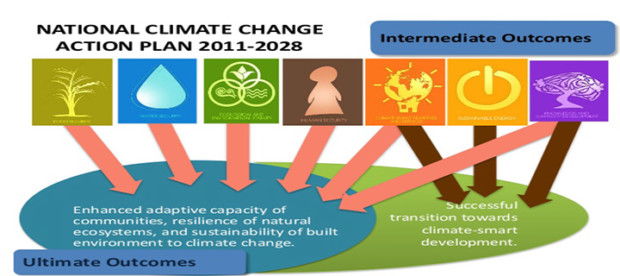Climate Change status and action
What’s the status of climate change and what can we do about it?
The science that our climate is changing has been proven to a very high probability by the Intergovernmental panel on Climate Change (IPCC). Most people see clear evidence of climate change, such as changing monsoon patterns in Himachal Pradesh.
Two key factors are considered using climate science: 1) emissions of gasses which cause climate change and 2) the impacts of that change. To manage the first requires gas ‘mitigation’ measures and to manage the second requires ‘adaptation’ to impacts. It is better to mitigate emissions than to adapt, because it is only necessary to adapt if mitigation has been inadequate. Using renewable energy in place of burning fossil fuels such as oil, gas and coal is a good ‘mitigation’ policy which might eventually lead to more snowfall in Himachal Pradesh. Using Ice Stupas, to help Ladakhi villages in drought is an internationally awarded ‘adaptation’ example. The ice melts during summer months, providing water to plants. In winter, the Ice Stupas grow again without any maintenance or electricity needed.
The next IPCC report is due in 2022 (IPCC Home). It will help United Nations Framework Convention on Climate Change (UNFCCC) manage a global stocktake of progress towards achieving the 2015 Paris Agreement. Last year, 169 countries ratified the Paris agreement. They agreed to keep global temperature rise this century well below 2 degrees Celsius above pre-industrial levels and to pursue efforts to limit the temperature increase even further to 1.5 degrees Celsius.
Every Himalayan country has ratified the Paris agreement (UNFCCC Paris Agreement list). Every country has a different Nationally Determined Contribution (NDC) to limit its emissions (mitigate) and manage climate change impacts (adapt). Tibet’s are covered by China and are different to India’s (refer UNFCCC NDCs).
In simple terms, every country’s emissions need to decline rapidly to limit global temperature rise: local and country actions for global results!
Also, a good emission reduction project in one country may not help another country. If for example, Tibet dams a river with hydro-energy that flows into India, that may help Tibet with a Chinese mitigation policy but not India which may need to find alternative water supply (negative adaptation), though it may reduce periodic downstream flooding (positive adaptation).
These complications mean it is better for the community to advocate for:
- country and regional emission reductions in NDCs
- mitigation and adaptation projects that benefit as many as possible;
- accurate national reports; and,
- positive changes that emerge from UNFCCC’s annual Convention of Parties (COP).
COP 23 is being held in Bonn, Germany in November 2017 (COP 23) and COP 24 in Poland in December 2018 (COP 24). A climate action tracker shows India is currently doing well (2 degrees Celsius compatible) and better than China (Highly insufficient) (see Climate Action Tracker, 18 Sept 2017)
It may be easier to track changes at a personal, family and community level. Mitigate your emissions and prepare to adapt to climate change impacts.
For mitigation, refer to on-line guidance and carbon footprint calculator tools, e.g. ICICI bank carbon calculator or the broader eco-footprint calculators, e.g. Earthday India. They haven’t changed much over recent years. You will need personal and household data. Once you have your footprint, you should consider the online advice to reduce it. Maybe seek help. For example, the author has completed a personal eco-footprint, helped others and changed behaviours to reduce emissions, e.g. cycle or walk mostly, eat vegetarian food mostly, live in a smaller house etc.
For adaptation, refer to on-line articles. Adaptation tends to be more location-specific than mitigation. Consider the potential impact on you, your family and community of say: flooding, landslip/avalanche, forest fire, heat effect, drought, later seasons, flora fauna and people migration, emerging diseases, food shortages etc. By impact, it can be physical, social and economic. For example, climate change impacts on the peoples of northern Syria are likely to have contributed to that country’s civil war (AM S, 2014). Perhaps ask yourself the questions: ‘What are the potential climate change impacts you’ve noticed in Himachal Pradesh or Tibet (see list above)?
Our climate will continue to change without human intervention. How quickly and effectively we mitigate emissions and adapt to impacts is being tested. That does not mean we watch and do nothing. We must make governments and companies accountable through advocacy and we must take responsibility ourselves.
Simon Cavendish, Marvin Westerveld, Amelia Rozelle
(Simon has a lower carbon footprint due to making life changes in Australia, and is even lower now living in India)
References
http://www.rolexawards.com/profiles/laureates/wangchuk_sonam/project1
Climate Action Tracker, 18/9/17



comment 0